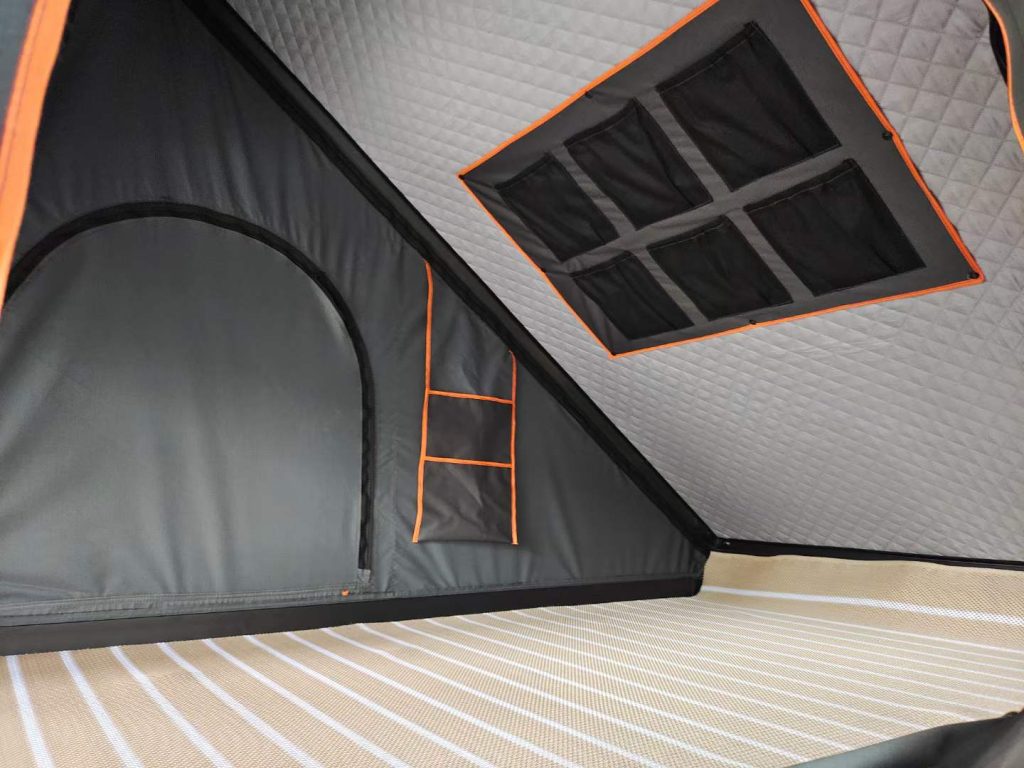When dark clouds gather and the pitter-patter of rain begins to fall, many campers wonder: can you still use your rooftop tent in the rain? The short answer is yes—you absolutely can. In fact, a quality rooftop tent is often better suited for rainy conditions than traditional ground tents, offering elevation, protection from ground moisture, and improved drainage.
But the key to a successful rainy camping experience lies in preparation, smart gear choices, and knowing how to optimize your setup for wet weather. Whether you’re a weekend adventurer or an overlanding enthusiast, this guide will help you camp confidently—even when the skies open up.
Why Rooftop Tents Work Well in Rain
Unlike conventional tents that sit directly on wet or uneven ground, rooftop tents elevate you above puddles, mud, and runoff. Their construction typically includes waterproof fabrics, sealed seams, and a rainfly—all designed to keep you dry and comfortable. This makes rooftop tents a solid choice for campers facing unpredictable weather.
Advantages Over Ground Tents
Elevation: No risk of water seeping in from below.
Integrated Rainfly: Many models include extended coverage over entrances and ladders.
Improved Drainage: Sloped surfaces prevent water pooling.
Enhanced Ventilation: Reduces internal condensation.

How Waterproof Are Rooftop Tents?
Waterproofing varies by model, but most rooftop tents are engineered for moderate to heavy rain. One important metric to look for is the Hydrostatic Head Rating (measured in mm), which tells you how much water pressure the fabric can withstand before leaking.
Light rain: 2,000mm rating is sufficient.
Moderate rain: Look for at least 2,500mm and sealed seams.
Heavy rain: 3,000mm+ and reinforced design is ideal.
Hard-shell rooftop tents usually offer better weather resistance due to their rigid structure and built-in seals. They are a preferred option for frequent campers in wet climates.

8 Smart Tips for Rainy Rooftop Camping
1. Prep Before You Go
Check the weather forecast and practice setting up your tent at home. Familiarity can save you frustration and keep your gear dry during a rushed setup.
2. Choose a Strategic Campsite
Park on high ground where rain runoff won’t gather under your vehicle. Avoid low-lying areas and stay clear of tall trees if lightning is in the forecast.
3. Level Your Vehicle
A flat sleeping surface helps with comfort and ensures water flows off the rainfly instead of collecting on top.
4. Set Up Efficiently
Install the rainfly first if rain is already falling. It’ll provide instant coverage while you finish setting up the tent body.
5. Ventilation Is Crucial
Keep vents or windows slightly open (if designed for it) to promote airflow. This helps combat interior condensation, especially during colder rainstorms.
6. Keep Wet Gear Outside
Designate a spot in your annex or under an awning for rain-soaked clothes and boots. This protects your sleeping area from becoming damp and cold.
7. Use Weatherproof Add-ons
Annex Rooms: Offer extra storage and a sheltered changing area.
Awnings: Shield entry points and provide cover while cooking or relaxing.
Moisture Absorbers: Products like silica packs or camping dehumidifiers can help maintain a dry interior.
8. Dry and Store Properly
After your trip, allow the tent to dry completely before storing it. This prevents mildew and extends its waterproof lifespan.
Maintenance: The Secret to Long-Term Waterproofing
Even the best tents need care to stay water-tight. Here’s how you can keep your rooftop tent performing well over time:
Reapply waterproof coatings annually or after heavy use.
Clean dirt and debris from the fabric to preserve breathability.
Lubricate zippers to prevent leaks and ensure easy access.
Check seams for wear and patch small tears promptly.
Taking these small steps will help your rooftop tent remain a reliable shelter in any downpour.
FAQ: Rooftop Tents and Rain
Q: Will a rooftop tent leak during heavy rain?
A: Not if it’s properly set up and maintained. Choose a model with a high waterproof rating, ensure the rainfly is installed correctly, and check seams regularly.
Q: Can I use a rooftop tent during a thunderstorm?
A: It’s best to avoid camping under tall trees or on exposed ridges. While rooftop tents provide good protection from rain, lightning safety protocols still apply.
Q: How do I avoid condensation inside my tent in wet weather?
A: Keep airflow moving with mesh windows or vents, and store wet items outside the sleeping area. Moisture-absorbing packets can also help reduce humidity.
Final Thoughts
A little rain doesn’t have to ruin your camping trip. With the right gear, preparation, and a bit of know-how, your rooftop tent can become a cozy haven even during stormy nights. In fact, many seasoned overlanders say rainy nights in a rooftop tent—listening to the soft rhythm of raindrops overhead—are some of their most memorable camping experiences.
So don’t let a wet forecast hold you back. Embrace the adventure, and trust that your rooftop tent has you covered—literally.
